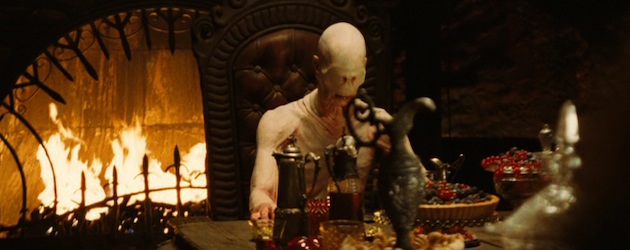Eugenio Caballero

When the studio era finished in America the biggest challenge to designers was to adapt their ideas to a less-controlled environment. To go on location. That gave a lot to a film -going on location is wonderful if it’s well-chosen. When you go on location it’s very important to understand why you’re making that decision, why that location works or not. If the location is narrow, if it’s tall, if it’s hostile, if it’s full of windows. All this can increase the feeling of a character. If that character feels observed because there are a lot of windows, if it’s a calming place or if it’s an enigmatic place. All of those things are very important. So the production designers back at the end of the studio era had to learn to design with the idea of using locations. They needed to learn to use that new tool. It’s the same for us with the digital tools.
It’s very important for us to understand is that our field is changing a lot with these new tools. The digital tools we have now are great if used correctly. We work with them on a daily basis and will be using them more and more -so we have to learn how to use them.
AS: Do you work closely with Visual Effects and the Visual Effects Supervisor on films?
EC: I try to work with them closely during the preproduction period. A lot of the elements that are generated later come from drawings and sketches and concept art that we created during preproduction. Then I try to work with VFX on the set too. And in post-production I usually do some supervising. Normally you’re on another project by then or you can’t really be hired for that entire period of time. But I still supervise the progress of elements that are crucial to the visuals of the film.
AS: How do you see the future of production design? After seeing all the developments in the last ten years how do you see the field changing in the next ten years?
EC: It will be different in certain ways but not in the most important way. We, as designers, are meant to create visual concepts for films. The tools that we use to transmit them are evolving. We don’t use the same tools that we did twenty years ago. Or even fifteen years ago. There are certain things that were not even imaginable ten years ago in the digital world. But the most important thing is that all of these developments have to support your visual concept for a film. And those visual concepts are what we as production designers must continue providing.
AS: Working with Guillermo on Pan’s Labyrinth, it seems like he’s less interested in relying on 3D visual effects than some other directors.
EC: That’s true, he loves the textures of real things. Every film is different for him but Pan’s Labyrinth was a very unusual project because we had total freedom. It was not really a studio film, it was done in Europe with Mexican and Spanish filmmakers. It was a very unique thing.